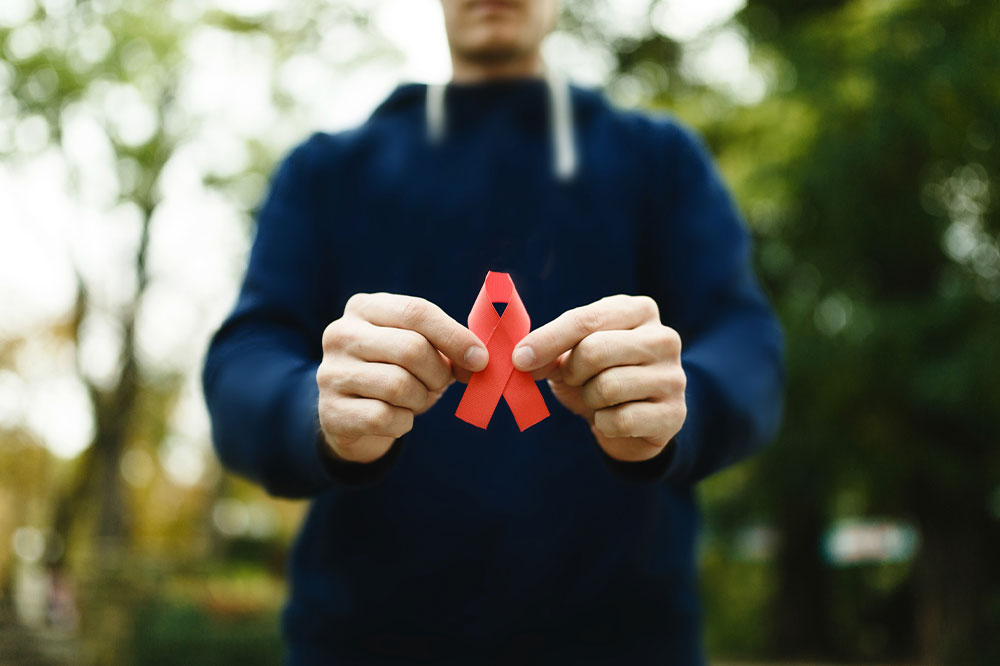
HIV and AIDS – Signs, causes, and management
Acquired immunodeficiency syndrome (AIDS) is a life-threatening condition caused by the human papillomavirus (HIV). This virus compromises one’s immune system and intervenes with the body’s ability to combat diseases. When an individual does not get treated for HIV, the virus weakens their immune system gradually, leading to AIDS. Since HIV and AIDS are closely linked, these terms are often used interchangeably. Here’s a look at the signs, causes, and treatments for HIV and AIDS.
Symptoms
The signs can vary depending on the condition’s stage:
Stage 1 or acute HIV
Not many find out right away when they get infected with HIV. They develop symptoms within the first two to six weeks after getting infected by the virus, when the body’s immune system tries to combat it. The symptoms mimic other viral diseases and are flu-like. They may last for a week and go away. The signs in this stage include:
- Fever
- Headache
- Aching muscles
- Fatigue
- A red rash that does not itch
- Swollen lymph nodes
- Sore throat
- Ulcers in the genitals, anus, esophagus, or mouth
When someone comes into contact with an HIV AIDS patient and develops these signs within the next two to six weeks, they must undergo an HIV test. Early testing is beneficial for two reasons:
- Starting the treatment early strengthens the immune system and relieves the symptoms.
- HIV levels in bodily fluids and blood are high at this stage, making it highly contagious.
Stage 2 or clinical latency
Once the immune system fails to fight HIV, a person stops experiencing flu-like symptoms, which is why this is also called the asymptomatic stage. If untreated, the virus kills the CD4 T cells during this period, destroying the immune system. Doctors examine the number of these cells through a blood test to determine the condition’s stage. Without proper treatment, the CD4 T cells continue to decline, making one more susceptible to infections. Those using ART therapy may remain in this stage for decades. Although one can still transmit the virus in stage 2, it is unlikely when treatment is underway.
Stage 3 or AIDS
It is the advanced stage of an HIV infection where the CD4 T cells drop below 200, and one’s immune system gets severely compromised. The patient falls sick often and experiences symptoms like:
- Night sweats
- A fever that lasts over ten days
- Constant tiredness
- Breathlessness
- Swollen lymph nodes in the groin or neck
- Yeast infection in the vagina, throat, or mouth
- Long-lasting or severe diarrhea
- Purple spots on the skin
- Bleeding or bruises
- Neurological signs like behavior changes, balance issues, confusion, vision changes, seizures, and memory loss
In most cases, those who go untreated at this stage live no more than three years.
Causes
HIV spreads through contact with body fluids carrying the virus. Typically, the virus transmits via:
- Rectal fluids
- Blood
- Pre-seminal fluid
- Breast milk
- Vaginal fluids
- Semen
Since the virus does not spread through saliva, open-mouthed kissing is not usually a cause. However, the condition can spread through intercourse, and it is one of the primary causes of HIV and AIDS in our country. Sharing equipment like needles during blood transfusions is also a leading cause. Further, mothers can transmit the virus to babies during breastfeeding, childbirth, or pregnancy, but it is less common.
Treatment and management
While there is no cure for HIV and AIDS, some treatments can help slow the condition’s progression and weaken the virus. Patients should start treatment immediately after the diagnosis, irrespective of the viral load.
ART therapy is the most common treatment for HIV. It helps guard the CD4 T cells, strengthens the immune system to fight the disease, and lowers the risk of transmission and progression to AIDS. The viral load becomes undetectable with proper treatment, meaning one still has HIV, but the virus does not show in the test results. However, if a person stops therapy, the viral load rises again, and HIV attacks the CD4 T cells.
HIV and AIDS patients are required to undergo routine blood testing to assess if the treatment is working to keep the CD4 T count up and viral load down. If a treatment does not work, the healthcare provider may switch to another option.




